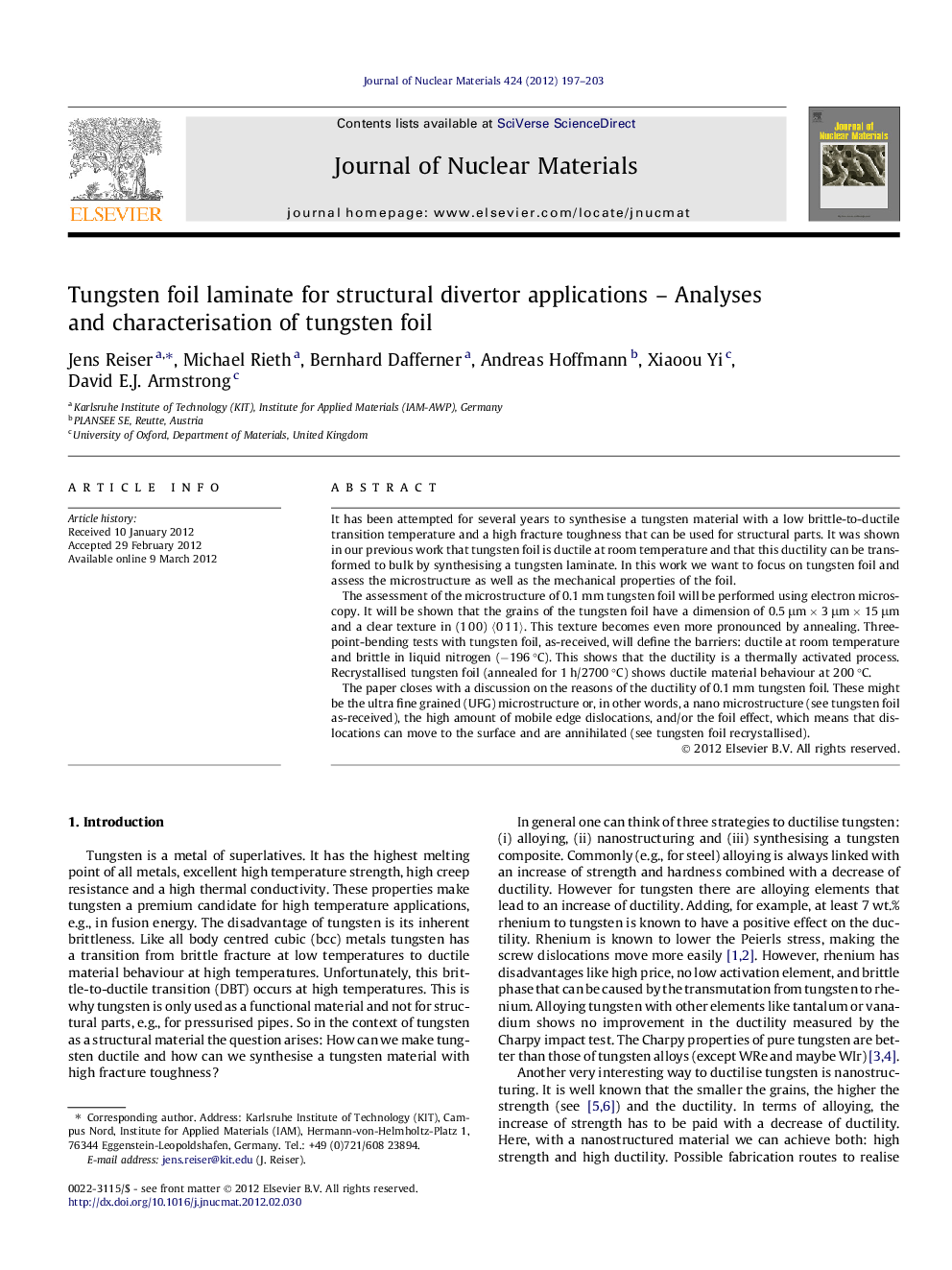| Article ID | Journal | Published Year | Pages | File Type |
|---|---|---|---|---|
| 1566186 | Journal of Nuclear Materials | 2012 | 7 Pages |
It has been attempted for several years to synthesise a tungsten material with a low brittle-to-ductile transition temperature and a high fracture toughness that can be used for structural parts. It was shown in our previous work that tungsten foil is ductile at room temperature and that this ductility can be transformed to bulk by synthesising a tungsten laminate. In this work we want to focus on tungsten foil and assess the microstructure as well as the mechanical properties of the foil.The assessment of the microstructure of 0.1 mm tungsten foil will be performed using electron microscopy. It will be shown that the grains of the tungsten foil have a dimension of 0.5 μm × 3 μm × 15 μm and a clear texture in (1 0 0) 〈0 1 1〉. This texture becomes even more pronounced by annealing. Three-point-bending tests with tungsten foil, as-received, will define the barriers: ductile at room temperature and brittle in liquid nitrogen (−196 °C). This shows that the ductility is a thermally activated process. Recrystallised tungsten foil (annealed for 1 h/2700 °C) shows ductile material behaviour at 200 °C.The paper closes with a discussion on the reasons of the ductility of 0.1 mm tungsten foil. These might be the ultra fine grained (UFG) microstructure or, in other words, a nano microstructure (see tungsten foil as-received), the high amount of mobile edge dislocations, and/or the foil effect, which means that dislocations can move to the surface and are annihilated (see tungsten foil recrystallised).
